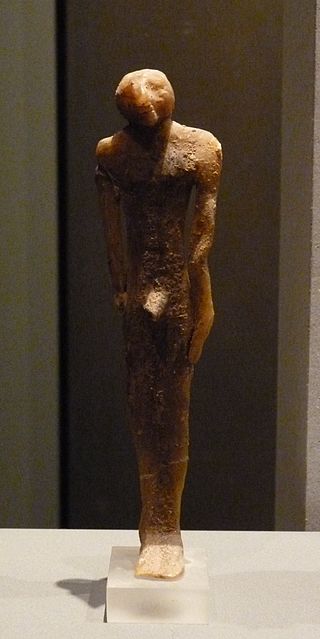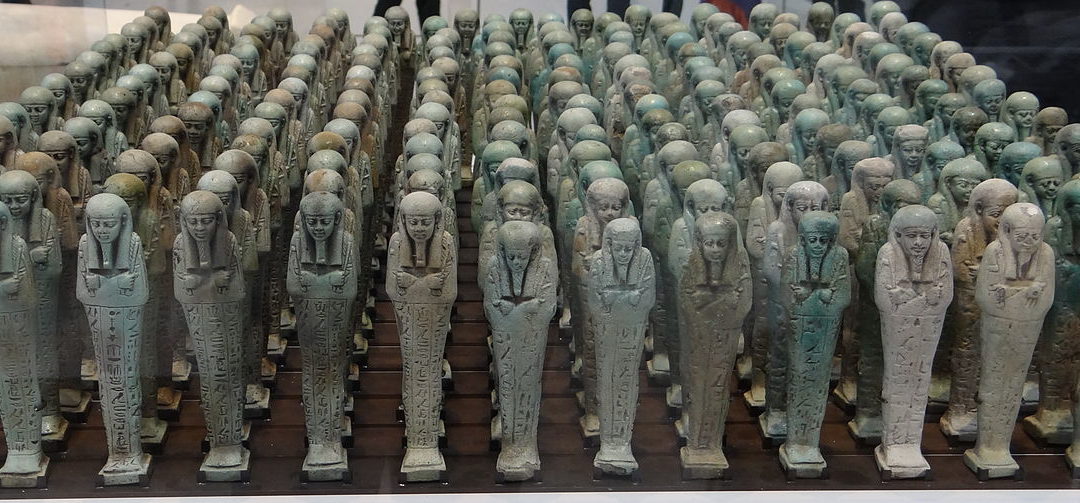The ushabtis, typically included as grave goods, were figurines believed to possess magical abilities, enabling them to perform tasks in the afterlife on behalf of the deceased individual.
In the event that the deceased encountered a situation requiring action in their eternal existence, they could summon the ushabti for assistance.
The term “ushabti” translates to “the one who answers.” Thus, upon this summons, the ushabti would be activated and perform tasks on behalf of the deceased who had called upon its magical powers. Inscriptions often accompanied ushabtis, stating phrases like “Here I am” or “I will do it.”
The oldest known ushabtis date back to the Middle Kingdom, although they eventually became commonplace items. Undoubtedly, ushabtis held significance among funeral grave goods and were also used for votive purposes.
Their popularity surged to the extent that it became customary to place 365 ushabtis, or even more, inside tombs. This practice aimed to ensure that the deceased could have these substitutes available for each day of the year throughout eternity, assisting in various tasks.
At times, these ushabtis were even arranged in groups, led by a foreman, resembling an entire army dedicated to serving the deceased and enhancing their eternal existence.
Ancient Egyptians crafted ushabtis in diverse styles and forms. While some were simple and rudimentary in design, others were intricate and exhibited remarkable artistry.
The production of ushabtis was influenced by economic capacity, fashion trends, and other societal factors.
Ushabtis were fashioned from various materials: wood, glass, stone, and occasionally bronze or adorned with luxurious elements like gold. However, the characteristic image of ushabtis is often associated with glazed Egyptian faience in blue or green tones.
The size of ushabtis varied widely, with some exceeding half a meter while others measured only a few centimeters.
The most common depiction shows ushabtis resembling a mummy, wrapped in a shroud, with arms crossed over the chest and feet placed together.
It’s equally common to find them holding farming tools, indicating their readiness to undertake agricultural tasks as needed. Occasionally, however, they were portrayed in attire different from the typical shrouded appearance, sometimes even wearing formal clothing.
At times, these figurines may be accompanied by small representations of hoes and baskets. Additionally, it’s customary to find these figurines placed inside boxes, varying in degrees of elaboration, within Egyptian tombs.
While many ushabtis lack inscriptions, it’s also frequent to encounter them bearing text intended to activate their supposed magical potential. This text, sometimes appearing in variations or abbreviated forms, originates from Chapter 6 of the Book of the Dead titled “Formula for an Ushabti to Execute Works in the Kingdom of the Dead.”
The inscription reads: “Words spoken by N (name of the deceased): ‘O ushabti of N, when called upon to perform all tasks typical in the kingdom of the dead, work diligently in your designated place at all times—cultivating fields, irrigating banks, and moving sand from east to west.’ You shall respond, ‘Here I am.'”
Translation from Chapter 6 of the Book of the Dead by P. Barguet.









